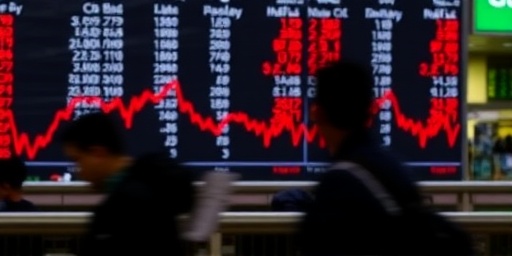Washington, DC – In a significant development for the US economy, Inflation cooled to 2.1% year-over-year in October, marking the lowest level since early 2021, according to the latest Consumer Price Index (CPI) report released by the Bureau of Labor Statistics. This easing of Inflation pressures has ignited fresh optimism among investors and economists, heightening expectations for a Federal Reserve rate cut as early as December to support ongoing economic recovery.
The CPI data, which measures changes in the prices of a basket of goods and services, showed a modest 0.2% increase from September, well below economists’ forecasts of 0.3%. Core CPI, excluding volatile food and energy prices, rose 2.6% annually, also indicating a slowdown in underlying Inflation trends. This report arrives at a pivotal moment, as the Federal Reserve grapples with balancing its dual mandate of price stability and maximum employment amid a resilient but uneven economic landscape.
October CPI Breakdown: Shelter and Energy Lead the Decline
Diving into the specifics of the October CPI, shelter costs – which account for about one-third of the index – increased by just 0.2% monthly, contributing significantly to the overall moderation in inflation. Year-over-year, shelter inflation stood at 4.9%, down from 5.1% in September, providing much-needed relief for renters and homeowners facing persistent housing affordability challenges.
Energy prices offered another bright spot, with gasoline dropping 2.5% in October after a slight uptick the previous month. Overall energy costs fell 1.1% year-over-year, influenced by stable global oil supplies and moderating demand. Food inflation, however, remained sticky at 2.4% annually, driven by higher prices for eggs and dairy products amid supply chain disruptions from avian flu outbreaks.
Transportation services saw a 0.4% monthly decline, largely due to lower airfares, while apparel prices dipped 0.1%. These granular shifts underscore a broader disinflationary trend, with economists noting that pandemic-era supply bottlenecks are finally easing. “The CPI print is a testament to the resilience of supply chains and the effectiveness of monetary policy in taming inflation,” said Mark Zandi, chief economist at Moody’s Analytics, in a statement following the release.
Compared to the peak of 9.1% inflation in June 2022, the current 2.1% rate represents a sharp deceleration, bringing the US closer to the Federal Reserve’s 2% target. This progress has been hard-won, following a series of aggressive rate hikes that pushed the benchmark federal funds rate to 5.25%-5.50% since March 2022.
Economists Rally Behind Fed Rate Cut Predictions
The cooling inflation figures have prompted a chorus of economists to ramp up calls for a Fed rate cut. A survey by Reuters of 80 economists showed that 92% now anticipate at least a 25-basis-point reduction in December, up from 85% prior to the CPI data. This shift reflects growing confidence that inflation is sustainably on a downward path, allowing the central bank to pivot toward supporting growth without reigniting price pressures.
“Today’s CPI report is the green light the Fed has been waiting for,” remarked Beth Ann Bovino, chief US economist at S&P Global. “With inflation undershooting expectations and the labor market holding steady, a December rate cut now looks all but certain, potentially easing borrowing costs for consumers and businesses alike.” Bovino’s outlook aligns with broader market sentiment, where futures traders are pricing in a 95% probability of a quarter-point cut, according to CME Group data.
However, not all views are unanimous. Some analysts caution that shelter inflation’s persistence could delay deeper cuts. “While the headline number is encouraging, core services remain elevated, suggesting the Fed might proceed cautiously,” noted Greg McBride, chief financial analyst at Bankrate. Despite these reservations, the consensus leans toward monetary easing, with projections for two to three rate cuts by mid-2024 to bolster the economy against potential slowdowns.
The implications extend beyond the Fed’s policy board. Wall Street reacted swiftly, with the S&P 500 climbing 1.2% on the day of the report, its best performance in weeks. Bond yields also dipped, with the 10-year Treasury falling to 4.1%, signaling investor bets on lower rates ahead.
Federal Reserve’s Balancing Act in the Face of Easing Inflation
As the Federal Open Market Committee (FOMC) prepares for its December 12-13 meeting, Chair Jerome Powell faces mounting pressure to initiate the rate-cutting cycle. In recent speeches, Powell has emphasized a data-dependent approach, stating that the Fed would act if inflation continues to moderate without undue risks to employment. The October CPI bolsters this narrative, showing unemployment steady at 4.1% and nonfarm payrolls adding 12,000 jobs – modest but positive figures.
Internal Fed dynamics add intrigue. Minutes from the September FOMC meeting revealed divisions, with some officials advocating for a pause on cuts until clearer evidence of disinflation emerges. Yet, the fresh CPI data may sway holdouts. Atlanta Fed President Raphael Bostic, a former hawk, recently softened his stance, saying in an interview, “If inflation keeps trending toward our target, we can afford to ease policy to prevent a recession.”
Looking at historical precedents, the Fed’s last rate-cutting cycle in 2019 began with similar inflation readings around 2%. That easing helped avert a downturn but eventually contributed to the inflationary surge post-pandemic. Policymakers are acutely aware of this, with projections from the September Summary of Economic Projections indicating a terminal rate of 4.4% by 2025, implying multiple cuts from current levels.
The interplay between inflation and Fed policy also influences global markets. Central banks worldwide, from the European Central Bank to the Bank of England, are watching the US closely, as a Fed rate cut could prompt synchronized easing, stabilizing currency fluctuations and trade flows.
Consumer and Market Impacts from the Inflation Slowdown
For everyday Americans, the cooling inflation translates to tangible relief. Grocery bills, which surged 25% during the height of the crisis, have stabilized, with overall food-at-home prices flat in October. Mortgage rates, hovering near 7%, could decline further with anticipated Fed moves, aiding the housing market’s recovery. Auto loans and credit card rates, already burdensome at over 20% APR for some, stand to benefit as well.
Businesses echo this optimism. A National Association of Manufacturers survey found 68% of executives expect easier access to credit post-rate cuts, potentially spurring investment in expansion and hiring. Retail giants like Walmart and Amazon reported steady consumer spending in their latest earnings, attributing resilience to wage gains outpacing inflation.
Yet challenges persist. Regional disparities highlight the uneven economy: while urban centers like New York see inflation below 2%, rural areas grapple with higher energy and transport costs. The stock market’s rally masks vulnerabilities in sectors like commercial real estate, where high rates have strained office vacancies amid remote work trends.
Broader economic indicators paint a picture of cautious growth. GDP expanded at a 2.8% annualized rate in the third quarter, per Commerce Department estimates, driven by consumer spending and exports. With inflation tamed, the risk of stagflation – high prices coupled with stagnation – recedes, but policymakers warn of geopolitical risks, including Middle East tensions that could spike oil prices anew.
Outlook: Rate Cuts and the Road to Economic Stability
Looking ahead, the December FOMC meeting will be a litmus test for the Fed’s response to the October CPI. If trends hold, a rate cut could set the stage for quarterly reductions through 2024, aiming to guide inflation firmly to 2% while sustaining job growth. Economists forecast GDP growth slowing to 1.8% next year, but with unemployment projected below 4.5%, a soft landing remains plausible.
Investors should monitor upcoming data releases, including November’s CPI on December 11 and the November jobs report, for further clues. International factors, such as China’s economic stimulus and Europe’s energy woes, will also shape the global backdrop. As one analyst put it, “The era of hiking is over; now it’s about fine-tuning to nurture recovery.”
In this environment, the US economy stands at a crossroads. Sustained disinflation could unlock pent-up demand, boosting sectors from technology to manufacturing. For consumers, lower rates promise easier finances, while for the Fed, it’s an opportunity to normalize policy without derailing progress. As markets digest these developments, the focus shifts to December, where the first cut could herald a new chapter of stability and growth.









